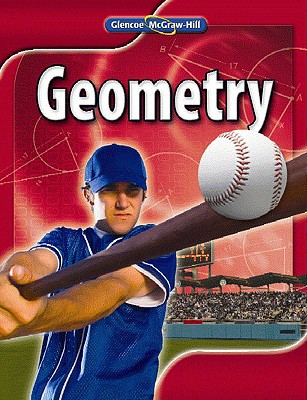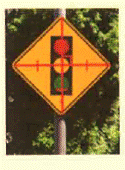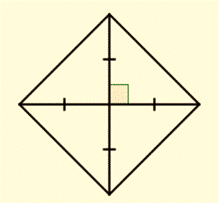
The classification of each quadrilateral.
Answer to Problem 31PPS
The given figure is a square.
Explanation of Solution
Given:
The given figure is:

Calculation:
The given figure can be drawn as:

According to Rectangle Theorem, if the diagonals of a parallelogram are congruent, then it is a rectangle.
According to Rhombi Theorem, if the diagonals of a parallelogram are perpendicular, then it is a rhombus.
According to Square Theorem, if the quadrilateral is both, a rectangle and a rhombus, then it is a square.
The diagonals in the given figure are bisecting each other, hence it is a parallelogram.
Also, the diagonals are perpendicular, hence it is a rhombus.
And, the diagonals are also congruent, hence, it is also a rectangle.
Therefore, the given figure is a square.
Chapter 6 Solutions
Geometry, Student Edition
Additional Math Textbook Solutions
A First Course in Probability (10th Edition)
Thinking Mathematically (6th Edition)
Intro Stats, Books a la Carte Edition (5th Edition)
Introductory Statistics
A Problem Solving Approach To Mathematics For Elementary School Teachers (13th Edition)
Algebra and Trigonometry (6th Edition)
- Door 87.5in to 47 living 44.75 Closet 96in Window ISS.Sin 48in Train Table 96in 48in 132:2 Windowarrow_forward39 Two sides of one triangle are congruent to two sides of a second triangle, and the included angles are supplementary. The area of one triangle is 41. Can the area of the second triangle be found?arrow_forwardA parallelogram with an area of 211.41 m^2 hast a base Thatcher measures 24.3m. Find ist height.arrow_forward
 Elementary Geometry For College Students, 7eGeometryISBN:9781337614085Author:Alexander, Daniel C.; Koeberlein, Geralyn M.Publisher:Cengage,
Elementary Geometry For College Students, 7eGeometryISBN:9781337614085Author:Alexander, Daniel C.; Koeberlein, Geralyn M.Publisher:Cengage, Elementary Geometry for College StudentsGeometryISBN:9781285195698Author:Daniel C. Alexander, Geralyn M. KoeberleinPublisher:Cengage Learning
Elementary Geometry for College StudentsGeometryISBN:9781285195698Author:Daniel C. Alexander, Geralyn M. KoeberleinPublisher:Cengage Learning

